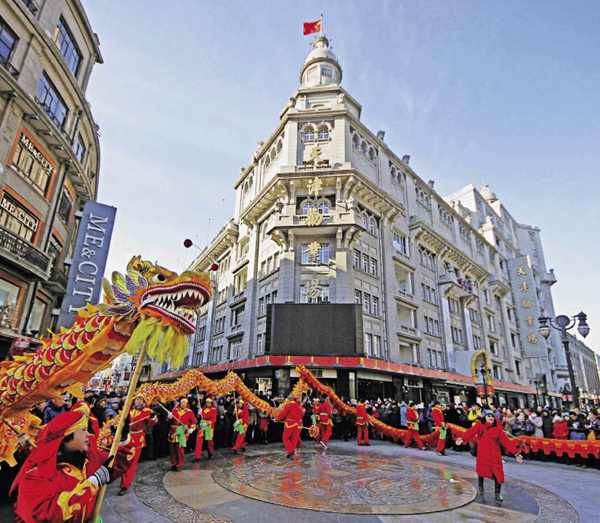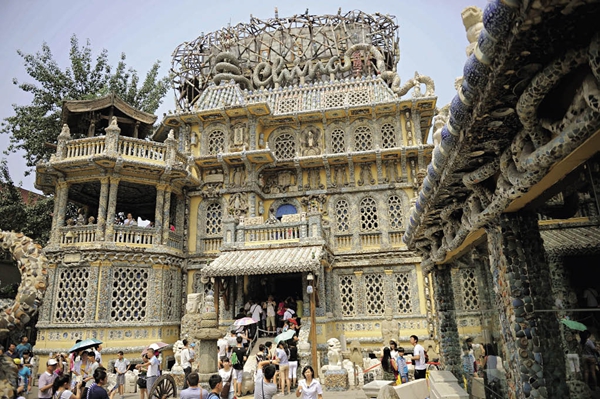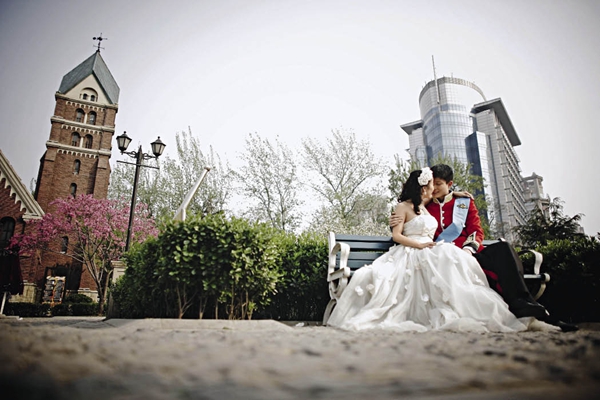Tianjin: A Melting Pot of Cultures
TIANJIN used to be the most westernized city in North China. It was the home of renowned writer Zhang Ailing, who spent a lot of time in her French-style garden during her idyllic childhood. It was the former residence of Liang Qichao, scholar and one of China’s first democrats. The longest-running Chinese language newspaper Ta Kung Pao and the prestigious Peiyang University (now Tianjin University) were founded in this city.
Regional characteristics display marked differences. Long a capital city, Beijing boasts an imperial dignity, a generosity of spirit, and a hub of culture and learning. Shanghai, one of China’s first international commercial ports, upholds modern thinking and is a commercial hotspot with a certain sophistication. Sitting comfortably between these two styles is Tianjin, positioned at the gateway to Beijing. Historically a city of migrants divided into nine different international concessions, Tianjin blends the cultures of northern and southern China with international influences, mixing foreign elegance with down-to-earth locals.
It is difficult to pin down the personality of Tianjin people. A confluence of rivers and a busy sea port, the city is a melting pot of ancient and modern, Chinese and foreign cultures, and is inhabited by people from all walks of life.
Comic Folk Culture
In Chinese, the name Tianjin means the “Emperor’s ferry.” When emperors lived in Beijing, Tianjin functioned as a guard of the Imperial City. The city was first developed as a fortress. Canals boosted its economy and consequently attracted increasing numbers of migrants to settle there. Boatmen, businessmen, soldiers, farmers, and migrant workers all resided here, creating a population structured differently to other cities; one dominated by the middle and lower classes, including soldiers, craftsmen and a large number of unemployed people.

Quanyechang, in the heart of Tianjin’s commercial district, has some of China’s most remarkable 20th-century architecture.
These residents came from different parts of China and all had their own customs, religions, art, and cuisines. This mixture formed Tianjin’s uniquely open, inclusive, and diverse style. The Tianjin philosophy of life can be summed up in a quote from a film depicting a typical Tianjin family, in which the main character says: “My mother believes a family can have a very happy life just so long as there isn’t a single member in hospital or prison!” Simple and pragmatic but also displaying humour and passion.
Tianjin people are well-known for their humor. In the old days, folks tended to banter or make fun of themselves to get a little relief from their hard life. Tianjin people have a reputation as good talkers who very cleverly express their humor and tolerance. Even the most everyday situations can become stand-up comedy. Listening to Tianjin people talk is hilarious because they are so good at using jokes to show their intelligence.
Quanyechang, a commercial center in Tianjin, is the center for one of China’s more intangible forms of cultural heritage: cross-talk. This sort of comedy, with its linguistic witticisms and wordplay, is widely popular in China.
European Architecture in the Old Concessions
In the old concession districts, European-style buildings with gardens make interesting places to visit.
After the Second Opium War ended in 1860, the big powers including Great Britain, France, the U.S., Germany, and Japan established concessions in Tianjin. Over the next few years, Russia, Belgium, Austria-Hungary, and Italy followed suit. As the concession areas expanded, Tianjin gained the feel of a colonial city.

One of the European-style buildings in the old French concession is now decorated with hundreds of millions of porcelain fragments, adding a new scenic spot in Tianjin.
Foreign firms in the British concession constructed the city’s first European-style buildings. These were followed by places of worship, banks, and hotels: institutions like Wanghailou Church, Gordon Hall, the Astor Hotel, the German Club, and the Kailuan Mining Bureau Building, to name but a few. By the beginning of the 20th century, the city had become a forest of highrises.
The number of Western-style residences with gardens also grew. These beautiful houses, built in the style of various European countries, line the banks of the Haihe River. The British, Italian, German, and French concessions boast the most impressive residences. With their manicured lawns, pointed red rooves, and large balconies, the English houses are particularly attractive, just like a painting. There are five roads in the old British concession which feature the largest number of European-style buildings. This has become known as the “Five-Avenue Area.”

The Five-Avenue Area is a popular location for wedding photos.
After foreign residents left the city, their houses were inhabited by various dignitaries, including the royal families of the Qing Dynasty (1644-1911) who had been evicted from the Forbidden City, senior officials of the Beiyang Government (1912-1928), business tycoons and distinguished personages. Historical buildings, and the people who lived in them, all help to write the legend of the city.
Tianjin Cuisine
Tianjin cuisine has a lot of fans. There is everything from elegant fine dining to delicious street snacks.
Thanks to its location on Bohai Bay, Tianjin has abundant seafood. As opposed to the more delicate way of cooking fish in southern China, seafood in Tianjin is usually served in big bowls and huge dishes, which reflects the city’s characteristic openness and lack of pretension.
Merging food from different regions with local flavors, Tianjin cuisine has developed into a multi-regional food culture. Tianjin food has a distinctive salty and fresh flavour, the product of Shandong-style cooking, a major culinary influence. The main cooking methods of Huaiyang Cuisine have also been incorporated; so much of Tianjin’s food is braised or stewed. With easy access to the Grand Canal, linking northern and southern China, Tianjin was able to enjoy some of the specialties of southern China. Things like dried beancurd sticks, dried bamboo, ham, and various southern seasonings are common sights on Tianjin dining tables.
The importance of snacks in Tianjin cuisine should never be ignored. Steamed stuffed buns (baozi) are common all over the country, but Tianjin’s Goubuli, the most famous brand of baozi, turns it into a gourmet meal. Fried dough twists, another well-known local snack, are said to derive from a fried snack made by the Hui ethnic group, called sanzi. In the past, large numbers of Hui people settled along the banks of the Grand Canal and brought sanzi to Tianjin. Locals added more ingredients to the recipe and changed the cooking method, transforming sanzi into popular fried dough twists. Pancakes rolled with spring onions have long been a favourite amongst people in Shandong Province. In Tianjin, the pancake is made of mung bean flour and rolled with egg, scallions, and fermented bean sauce. The pancake can also be sliced and served with salty toppings and a slightly spicy sauce. This snack is called guobacai.
Almost every kind of traditional food can be found on the Nanshi Food Street, which is among the city’s top 10 attractions. In addition to numerous restaurants serving traditional Tianjin dishes and snacks, you can also find the famous Eight Cuisines of China, encompassing the food of Shandong, Sichuan, Zhejiang, Fujian, Anhui, Guangdong, Hunan, and Jiangsu. Whether you are looking for imperial cuisine, simple home cooking, halal food, vegetarian food, or even Western-style food, Nanshi Food Street has it all. Food streets like this can also be found on Liaoning Road in Heping District and in October Food Street of Hebei District.
(Compiled by China Today)
Services
Economy
- Why China’s Socialist “Supply Side Reform” Outperforms the West’s “Half Keynes” Model
- Beijing’s Smoking Ban, One Year On
- China’s Cutting-edge High-speed Railway Technologies Unveiled in Berlin
- 45 Years of Diplomatic Relations with Mutual Benefits
- Cultural and Creative Industries: New Engine for Economic Growth
